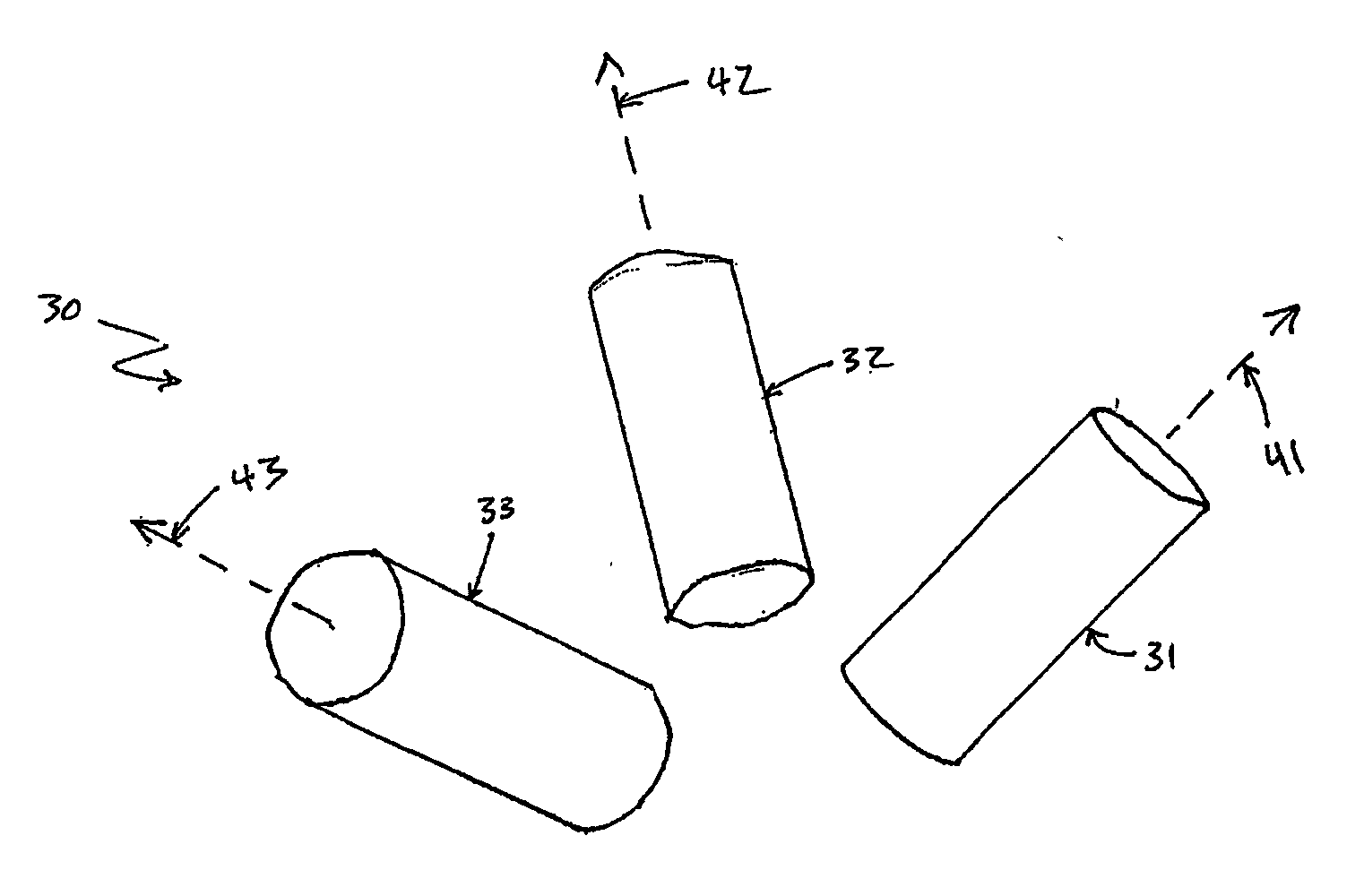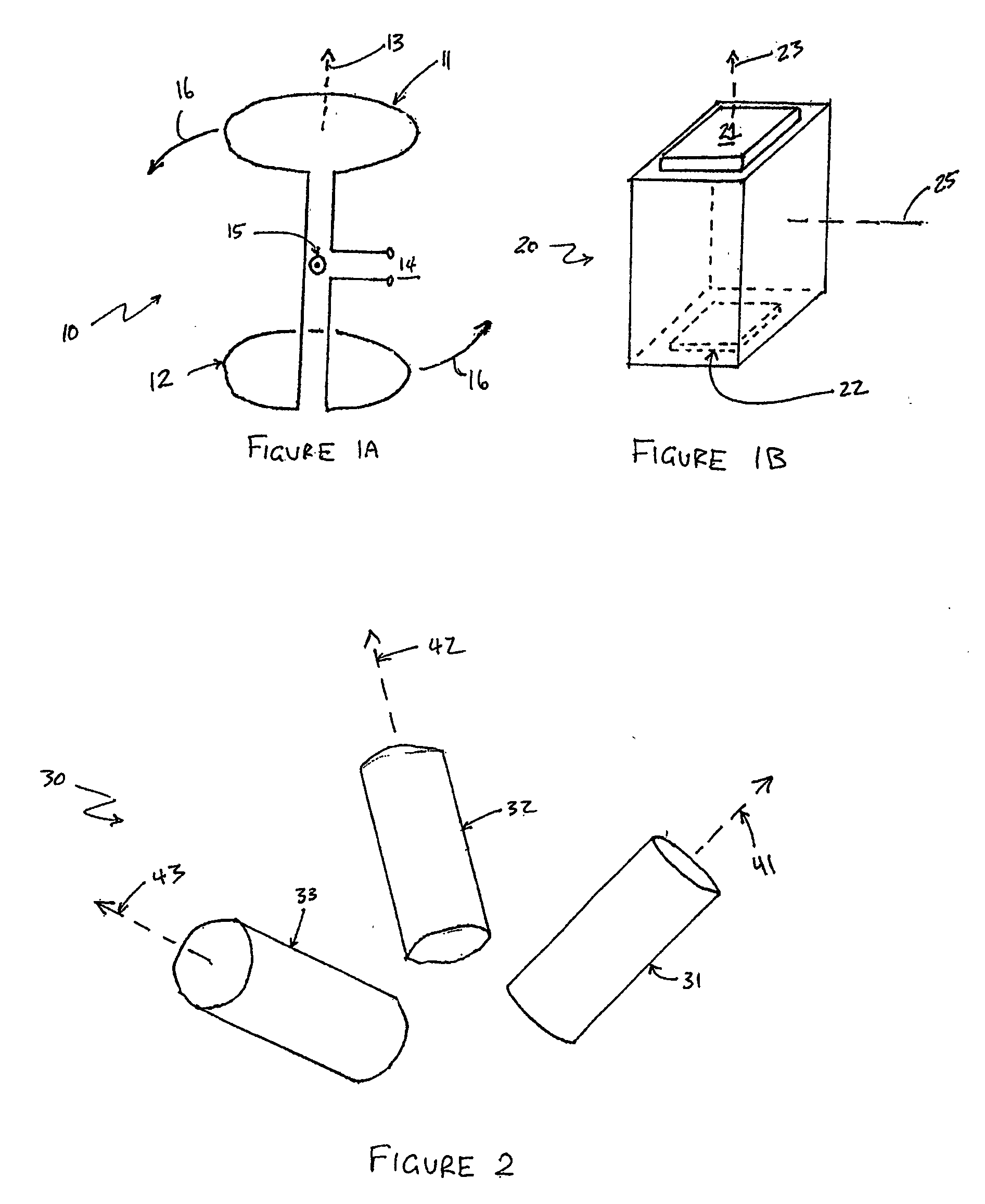Method and apparatus for magnetic field detection
a magnetic field and detection method technology, applied in the direction of magnetic field measurement using superconductive devices, instruments, dissimilar materials junction devices, etc., can solve the problems of inability to provide data about the absolute value of the magnetic field or gradient, gate drift and noise, and low frequency accuracy of state of the art gradiometers, etc., to facilitate separation of these effects, effective vibration isolation, and easy engineering
- Summary
- Abstract
- Description
- Claims
- Application Information
AI Technical Summary
Benefits of technology
Problems solved by technology
Method used
Image
Examples
Embodiment Construction
[0051]FIG. 1a illustrates a low temperature superconducting gradiometer 10 in accordance with the present invention. Gradiometer 10 comprises a first field vector sensor in the form of superconducting wire loop 11. Gradiometer 10 further comprises a second field vector sensor in the form of superconducting wire loop 12. Sensors 11 and 12 are positioned substantially coaxially so as to sense field vectors along axis 13. Further, sensors 11 and 12 are connected in a differencing arrangement, whereby a signal produced at terminals 14 stems from the difference between the magnetic field vectors sensed by sensors 11 and 12. In accordance with the present invention, gradiometer 10 is configured to rotate about axis 15, which is at a normal to the page as viewed in FIG. 1a. Rotation of the gradiometer is indicated by direction arrows 16.
[0052]FIG. 1b illustrates a high temperature superconducting gradiometer 20 in accordance with the present invention. Gradiometer 20 comprises a first fie...
PUM
 Login to View More
Login to View More Abstract
Description
Claims
Application Information
 Login to View More
Login to View More - R&D
- Intellectual Property
- Life Sciences
- Materials
- Tech Scout
- Unparalleled Data Quality
- Higher Quality Content
- 60% Fewer Hallucinations
Browse by: Latest US Patents, China's latest patents, Technical Efficacy Thesaurus, Application Domain, Technology Topic, Popular Technical Reports.
© 2025 PatSnap. All rights reserved.Legal|Privacy policy|Modern Slavery Act Transparency Statement|Sitemap|About US| Contact US: help@patsnap.com



